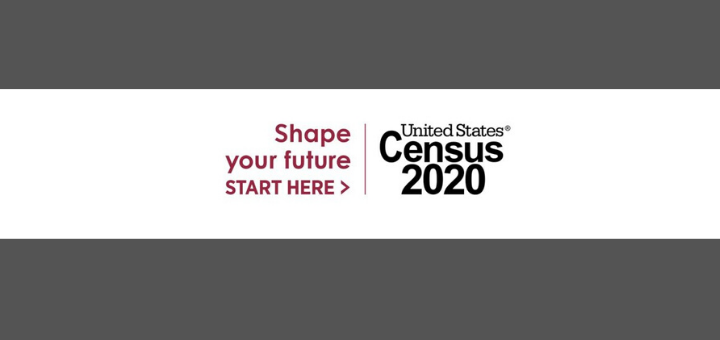SOURCE: 2020 Census
AUG. 11, 2020 — This week, the U.S. Census Bureau began following up with households nationwide that have not yet responded to the 2020 Census. Based on the current self-response rate of 63.3%, the Census Bureau estimates it will need to visit about 56 million addresses to collect responses in person. Up to 500,000 census takers across the country will go door to door to assist people in responding to the 2020 Census.
Census takers began following up with households on July 16 in a limited number of areas and added additional areas each week thereafter. Starting Aug. 9, all remaining offices began following up with households nationwide. Census takers have completed training on social distancing and safety protocols, will follow local public health guidelines, and will be required to wear a face mask when conducting follow-up visits.
“America has answered the call and most households responded to the census online, by phone or by mail,” said Census Bureau Director Dr. Steven Dillingham. “To ensure a complete and accurate count, we must now go door to door to count all of the households we have not heard back from. During this phase, you can still self-respond online (at 2020census.gov), by phone (at 844-330-2020), or by mailing your completed questionnaire.”
The Nonresponse Followup (NRFU) operation is the final stage of conducting the once-a-decade population count of everyone living in the United States. Households can still respond now by responding online at 2020census.gov, by phone at 844-330-2020, or by completing and mailing back the paper questionnaire they received. Households can respond online or by phone in one of 13 languages and find assistance in many more. Those that respond will not need to be visited to obtain their census response.
What Households Can Expect
In most cases, census workers will make up to six attempts at each housing unit address to count possible residents. This includes leaving notification of the attempted visit on the door. The notification will include reminder information on how to respond online, by paper or by phone. In addition, census workers may try to reach the household by phone to conduct the interview.
Census takers will go to great lengths to ensure that no one is missed in the census. After exhausting their efforts to do an in-person interview with a resident of an occupied housing unit, they will seek out proxy sources — a neighbor, a rental agent, a building manager or some other knowledgeable person familiar with the housing unit — to obtain as much basic information about the occupants as they can.
Census takers are hired from local communities. All census takers speak English, and many are bilingual. If a census taker does not speak the householder’s language, the household may request a return visit from a census taker who does. Census takers will also have materials on hand to help identify the household’s language.
How to Identify Census Takers
Census takers can be easily identified by a valid government ID badge with their photograph, a U.S. Department of Commerce watermark, and an expiration date on the badge. To confirm a census taker’s identity, the public may contact their regional census center to speak with a Census Bureau representative.
The Census Bureau Will Follow Up With Some Households by Phone
In order to minimize the need to send census takers to households in person, the Census Bureau is training census takers to follow up with households by phone. Using information provided to the Census Bureau and third-party purchased data, the Census Bureau has a strong contact list for both landlines and cellphones assigned to houses on the Census Bureau’s address list. These phone calls will enable the Census Bureau to have maximum flexibility for conducting field operations, and is one more method that census takers can use to reach nonresponding households. Phone calls will be used on an as-needed basis and when in-person contact attempts have not resulted in an interview. If a voicemail is available, the census taker will leave a message asking the household to call one of the Census Bureau’s call centers.
Census Response Representatives to Visit Low-Responding Areas
The Mobile Questionnaire Assistance (MQA) program will continue through Sept. 30. This is a separate activity from census takers going door to door. MQA representatives are in open, public places in the lowest-responding areas of the nation to encourage people to respond to the 2020 Census. These locations are where people naturally visit when leaving home and can be used to help increase self-response rates. MQA is part of the Census Bureau’s final push to encourage people to complete the 2020 Census.
About the 2020 Census
The U.S. Constitution mandates a census of the population every 10 years. The goal of the 2020 Census is to count everyone who lives in the United States on April 1, 2020 (Census Day). Census statistics are used to determine the number of seats each state holds in the U.S. House of Representatives and inform how billions of dollars in federal funds will be allocated by state, local and federal lawmakers annually for the next 10 years.
For more information, visit 2020census.gov.
